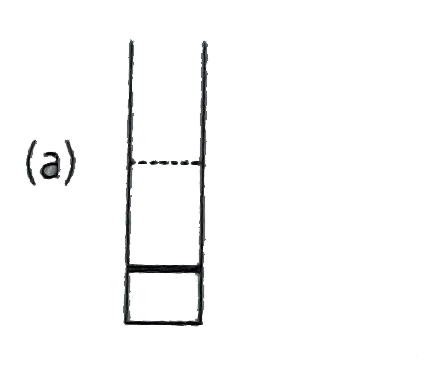Semiconservative DNA replication was proved by Messelson and Stahl, in which DNA was made
Radioactive using N15
Heavy using N14
Heavy using 15NH4Cl
Radioactive using 14NH4Cl
The correct Answer is:C
Step-by-Step Solution:
1. Understanding Semiconservative DNA Replication:
- Semiconservative DNA replication means that when DNA replicates, each new DNA molecule consists of one original (parental) strand and one newly synthesized strand. This was a hypothesis proposed to explain how DNA is copied.
2. The Experiment by Meselson and Stahl:
- Meselson and Stahl conducted an experiment to prove the semiconservative model of DNA replication. They used isotopes of nitrogen to label the DNA.
3. Use of Nitrogen Isotopes:
- They cultured bacteria in a medium containing N15, which is a heavy isotope of nitrogen. This allowed the DNA synthesized in the bacteria to incorporate the heavy nitrogen, resulting in DNA of heavy density.
4. Centrifugation Observations:
- After allowing the bacteria to replicate in the N15 medium, they centrifuged the DNA. The DNA settled at the bottom of the centrifuge tube, indicating that it was heavy due to the incorporation of N15.
5. Transfer to N14 Medium:
- They then transferred some of the bacteria from the N15 medium to a medium containing N14 (the normal nitrogen isotope). After allowing replication in the N14 medium, they centrifuged the DNA again.
6. Results After Second Centrifugation:
- The results showed two distinct bands after the second centrifugation: one band at an intermediate density (indicating the presence of both N15 and N14) and one band at a lighter density (indicating DNA that had only incorporated N14). This confirmed that DNA replication was semiconservative.
7. Evaluating the Options:
- Now, let's evaluate the options given in the question:
- Option 1: Radioactive using N15 - Incorrect, as N15 is not radioactive.
- Option 2: Heavy using N14 - Incorrect, as N14 is not heavy.
- Option 3: Heavy using N15 NH4Cl - Correct, as N15 is the heavy isotope used in the experiment.
- Option 4: Radioactive using N14 NH4Cl - Incorrect, as N14 is not radioactive.
8. Conclusion:
- The correct answer is Option 3: Heavy using N15 NH4Cl.
- Semiconservative DNA replication means that when DNA replicates, each new DNA molecule consists of one original (parental) strand and one newly synthesized strand. This was a hypothesis proposed to explain how DNA is copied.
- Meselson and Stahl conducted an experiment to prove the semiconservative model of DNA replication. They used isotopes of nitrogen to label the DNA.
- They cultured bacteria in a medium containing N15, which is a heavy isotope of nitrogen. This allowed the DNA synthesized in the bacteria to incorporate the heavy nitrogen, resulting in DNA of heavy density.
- After allowing the bacteria to replicate in the N15 medium, they centrifuged the DNA. The DNA settled at the bottom of the centrifuge tube, indicating that it was heavy due to the incorporation of N15.
- They then transferred some of the bacteria from the N15 medium to a medium containing N14 (the normal nitrogen isotope). After allowing replication in the N14 medium, they centrifuged the DNA again.
- The results showed two distinct bands after the second centrifugation: one band at an intermediate density (indicating the presence of both N15 and N14) and one band at a lighter density (indicating DNA that had only incorporated N14). This confirmed that DNA replication was semiconservative.
- Now, let's evaluate the options given in the question:
- Option 1: Radioactive using N15 - Incorrect, as N15 is not radioactive.
- Option 2: Heavy using N14 - Incorrect, as N14 is not heavy.
- Option 3: Heavy using N15 NH4Cl - Correct, as N15 is the heavy isotope used in the experiment.
- Option 4: Radioactive using N14 NH4Cl - Incorrect, as N14 is not radioactive.
- The correct answer is Option 3: Heavy using N15 NH4Cl.
Topper's Solved these Questions
- MOLECULAR BASIS OF INHERITANCE Book:AAKASH INSTITUTE ENGLISHChapter:MOLECULAR BASIS OF INHERITANCE Exercise:ASSIGNMENT (SECTION -A) Objective Type Questions
Explore 35 Videos
- MOLECULAR BASIS OF INHERITANCE Book:AAKASH INSTITUTE ENGLISHChapter:MOLECULAR BASIS OF INHERITANCE Exercise:ASSIGNMENT (SECTION -B) Objective Type Questions
Explore 36 Videos
- MOLECULAR BASIS OF INHERITANCE Book:AAKASH INSTITUTE ENGLISHChapter:MOLECULAR BASIS OF INHERITANCE Exercise:TRY YOURSELF (Select true of false statement.)
Explore 3 Videos
- MOCK_TEST_20Book:AAKASH INSTITUTE ENGLISHChapter:MOCK_TEST_20Exercise:EXAMPLE
Explore 31 Videos
- MORPHOLOGY OF FLOWERING PLANTSBook:AAKASH INSTITUTE ENGLISHChapter:MORPHOLOGY OF FLOWERING PLANTSExercise:TRY YOURSELF
Explore 38 Videos
Similar Questions
Knowledge Check
The semi-conservative nature of DNA replication was established by Meselson and Stahl in their classic experiment with bacteria. They grew bacteria in N15−NH4CI containing medium with N14 - containing compounds and allowed to grow for three generation . CsCI density gradient centrifugation of isolated DNA established the nature of semiconservation DNA replication. The pictorial representation below shows the positon of differentially labeled DNA in CsCI density gradient.

Had the DNA replication been conservative, what would have been the pattern ?A B
B C
C D
D
DNA replication occurs
View SolutionDNA replication is found in :-
View SolutionSemiconservative replication of DNA was first shown in
View SolutionDNA replication includes :-
View SolutionSemiconservative replication of DNA was first demonstrated in
View SolutionDNA replication is continuous
View SolutionThe nature of DNA replication is :-
View Solution